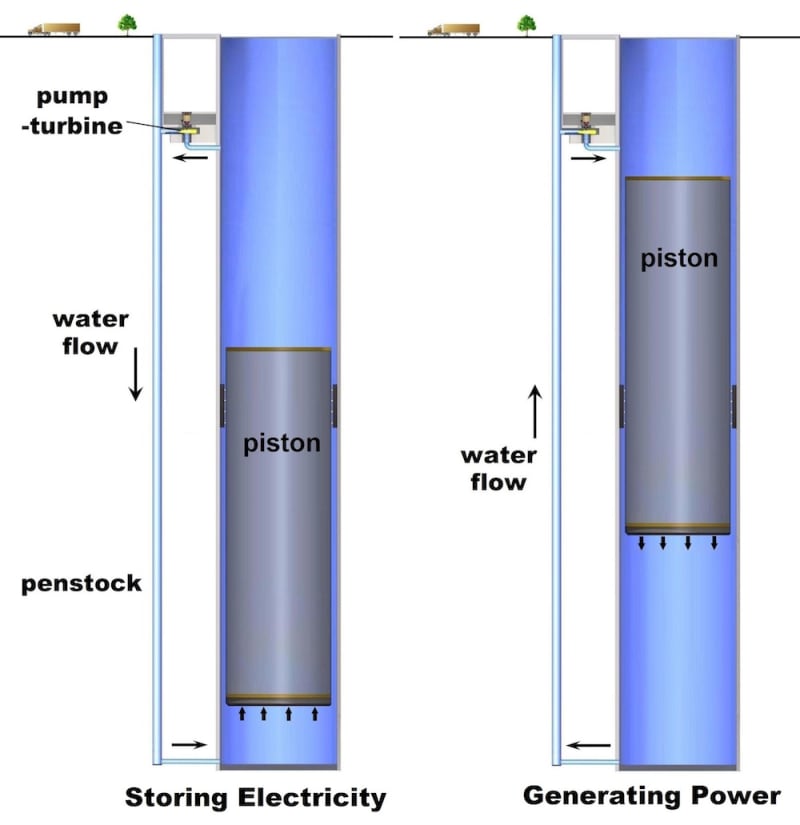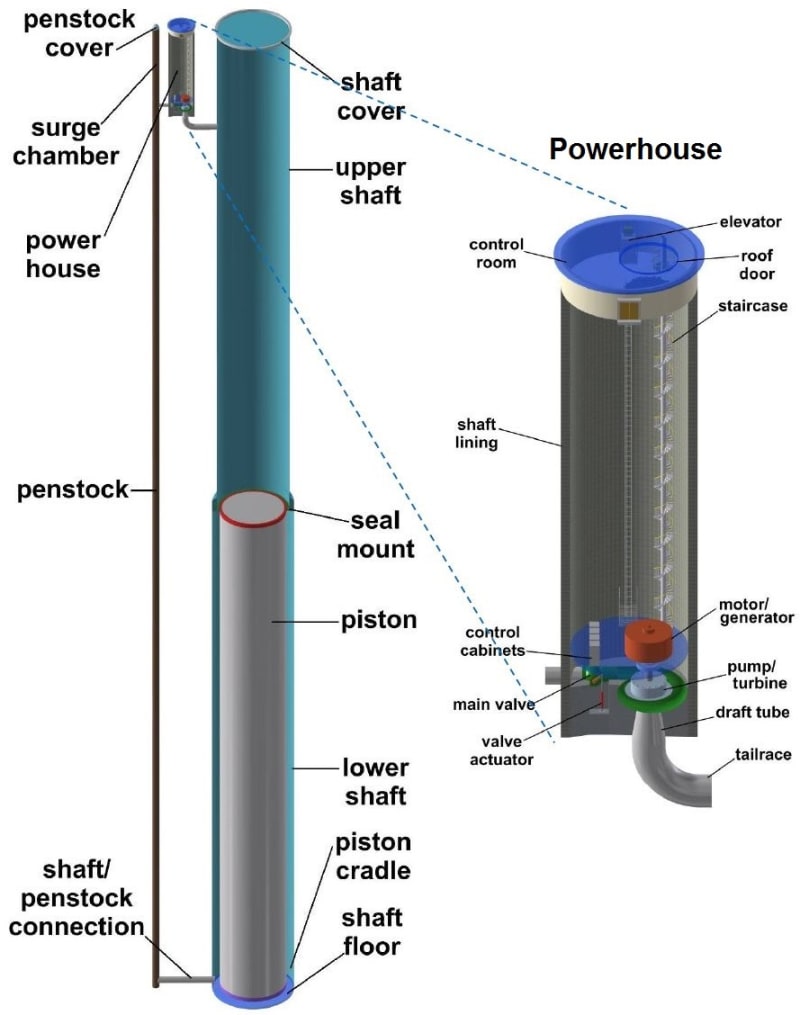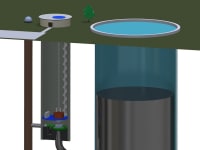
In recent years the cost of wind and solar generation has dropped precipitously resulting in exponential growth. Governments are now setting goals of 50%, 80% or even 100% renewable generation, but for these goals to be met one critical element is missing: low cost electricity storage.
The preeminent technology is pumped storage hydro (“PSH”), with over 150 gigawatts installed and more planned. However, increasing construction costs and siting constraints are restricting expansion. Batteries are effective in some applications, but far too expensive at PSH scale. Neither of these technologies can solve the storage dilemma.
The Gravity Power Plant (GPP) provides an alternative to PSH with similar scale, lower cost and better operating characteristics, but without its constraints. Like PSH it elevates mass to store energy, but instead of pumping water from a low reservoir to a high reservoir it uses water pressure to elevate a massive piston in a water-filled shaft. To store energy an electric pump-turbine forces water down a penstock to hydraulically raise the piston. On demand the piston descends, forcing water back through the pump-turbine to spin a generator and produce power. Net energy stored is “mgh”, i.e. piston mass m (minus the water mass displaced) multiplied by the gravitational constant g and the height the piston is lifted h. Both m and h are large, providing enormous storage on very little land. Some of the parameters for practical GPPs are:
Shaft diameter:20 – 100 meters
Shaft depth:500 – 1000 meters
Piston height:250 – 500 meters
Storage mass:0.4 - 8.7 million tonnes
Piston seals:Sliding hydraulic-type
Turbine pressure:375–750 meters of head
Power output:50 – 1600 megawatts
Storage capacity:200 – 6400 megawatt-hours
GPPs use proven hydropower components and conventional shaft construction techniques, making it practical for civil construction companies to build utility-scale storage in countless places where previously it was impossible, including in cities. GPPs need no make-up water, are silent, and are barely visible above ground. They can ramp from zero to full power in seconds, making them an excellent complement to variable wind and solar energy. Cost per megawatt decreases and efficiency increases as size increases, with AC-to-AC round trip efficiency reaching an excellent 84% in large plants. Some utilities are building Concentrated Solar Power plants, at much higher cost than PV solar, purely because of its thermal storage ability. But PV solar with GPP storage is both cheaper and more flexible due to its ability to store electricity from any source. Based on detailed construction plans from a leading underground engineering company, large GPPs will cost well under $1000 per kilowatt and provide a cost of storage approaching one cent per kilowatt-hour produced – far less than batteries – making them even cheaper than natural gas peaking plants. Applications include peaking power, ancillary services, intermediate power and time-shifting of renewable energy. As renewable generation continues to expand, the addressable market could easily exceed a trillion dollars.
-
Awards
-
 2017 Top 100 Entries
2017 Top 100 Entries
Like this entry?
-
About the Entrant
- Name:Jim Fiske
- Type of entry:teamTeam members:Jim Fiske
Tom Mason
Chris Grieco - Patent status:patented








